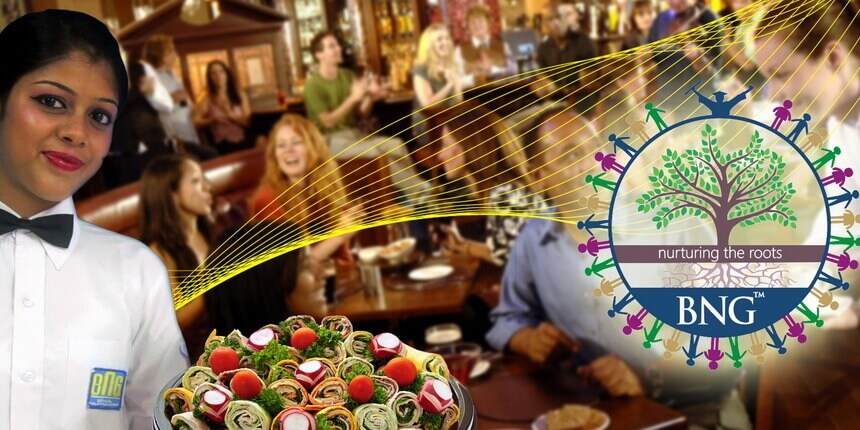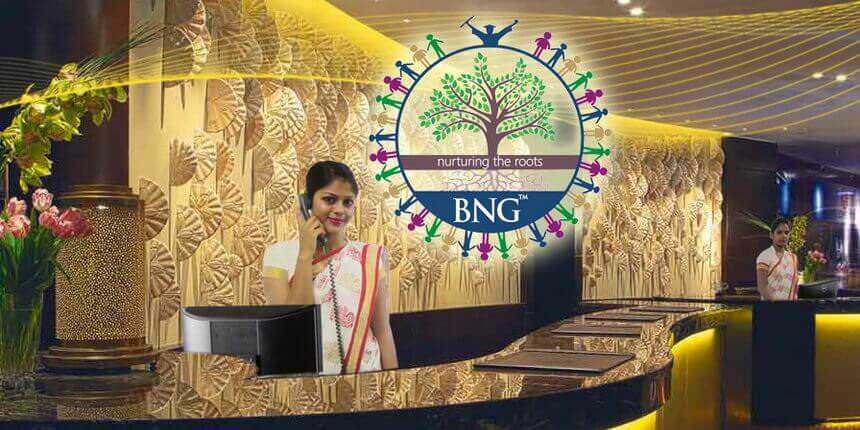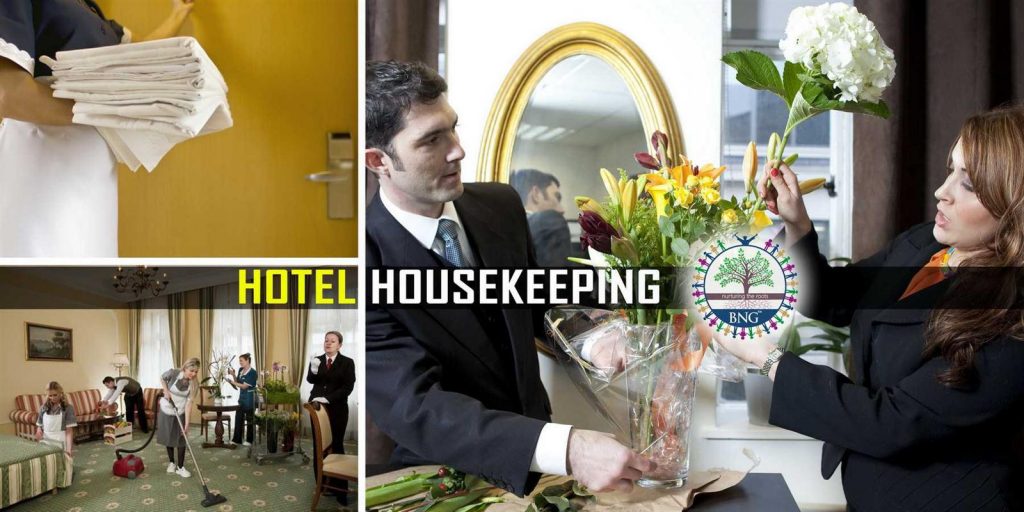Food and Beverage Marketing
A simple definition of Food and Beverage Marketing is seeing the business from the perspective of the guest. A Food and Beverage Marketing emphasis on excellent guest relations is a significant key to a hospitality operation’s success.’
What is Food and Beverage Service Industry ? … learn here
Food and Beverage Marketing : Focus on Guest Service
After all, the public has choices, and people can express their displeasure by visiting a competitor’s property. Self-operated food services that cannot attain financial and other goals may be administered by a contract management company.
Food service managers who are committed to Food and Beverage Marketing do the following:
- Use strategies that focus on what is best for their guests.
- Talk about service routinely.
- Implement guest-friendly service systems for better Food and Beverage Marketing.
- Exemplify all aspects of excellent guest relations as they personally talk about and interact with guests.
- Balance high-tech with high-touch; that is, they temper systems and methods with the personal factor.
- Market service to their guests.
- Emphasize service in employee training programs and reward staff members who consistently deliver exemplary guest service.
- Measure service and make the results available to their employees and Food and Beverage Marketing team.
If they do this, success is more likely to follow.
Learn all about Food and Beverage Management …here
Food service managers should be able to effectively answer the following questions:
- How important is service in my organization in terms of Food and Beverage Marketing ?
- How do I emphasize service during employee recruitment and selection and during employee orientation and training sessions?
- How do I tell/show my staff about service-related concerns?
- How do I evaluate service levels?
- What are my service strategies?
- What are my service procedures?
- How do I train my staff about service-related issues?
- Hew do I reinforce service strategies?
- Is service a program or a philosophy at my property?
- Does my staff know about moments of truth—any opportunities a guest have to form an impression about the property? Are all possible moments of truth favourable?
- Do I emphasize service all the time or only after a service-related problem has arisen?
Food and Beverage Marketing FEASIBILITY STUDIES
Potential investors decide whether to finance a project by evaluating the results of the feasibility study. These results guide the planners and architects of the project, and assist managers as they develop Food and Beverage Marketing plans and prepare initial operating budget.While the scope of a feasibility study varies from project to project, the following functions are common to most studies.
1] Identifying the market area characteristics.
2] Evaluating the proposed site
3] Analyzing the competition
4] Estimating the demand
5] Projecting operating results.
IDENTIFYING MARKET AREA CHARACTERISTICS
Market area characteristics include demographic information about potential guests in the general area of proposed site. Useful information about the potential guests includes age, gender, and level of education, marital status, and number of children. Family income, type of employment, and location of residence. Other helpful information includes the areas volume of retail sales, the number and type of industrial and commercial businesses, the impact on tourism, and available transportation.
In addition to presenting the current market area statistics, a feasibility study analyzes positive and negative trends that may affect demand for the proposed facility and Food and Beverage Marketing .
Know more about Food and Beverage Service ? …have a look
Technology and Feasibility Study Information for Food and Beverage Marketing
For example, Internet-based applications can provide demographic maps and reports for all areas and addresses within the United States. Owners and investors can obtain information based on postal zip codes, driving times, or distances that reveals potential-guest age groups, household facts, and average household expenditures. Computerized marketing data can also help restaurant managers learn about potential customers. For example, managers can obtain information useful in planning food delivery routes, and can learn the best, most effective ways to advertise to potential guests (such as telephone book yellow pages, billboard ads, or direct mail).
Evaluating the Proposed Site
A feasibility study evaluates the project site and the area surrounding it by researching the number of people living or working (1) in the surrounding metropolitan area, (2) within walking distance, and (3) within easy driving distance. Other factors the study can analyze include the availability and convenience of parking, traffic flow patterns, distances from exits off main highways, and the location of other attractions that draw guests, such as shopping malls, movie theatres etc.
Analyzing the Competition
A feasibility study generally analyzes information pertinent to each competitor, including the following:
- Location (proximity to the proposed site)
- Type of restaurant
- Source and volume of business
- Days and hours of operation
- Menu prices
- Guest check average
- Type of service
- Number of seats
- Availability of alcoholic beverage service
- Entertainment
- Promotional efforts
- Chain affiliation
For example, the results of a feasibility study can help determine the following:
- The type and volume of demand for food and beverage services
- The adequacy with which the competition satisfies the current demand
- The strengths and limitations of the competition
- The points of difference that must be established between the proposed facility and the competition
Estimating Demand for Food and Beverage Marketing
Data for this analysis can be gathered by surveying potential guests about their restaurant, banquet, and meeting room needs.
Projecting Operating Results
Most feasibility studies project pro forma financial results for the first, second, and (sometimes) third year of operation. Potential investors need this information so they can decide whether to finance the project.
Staying Current
Feasibility studies are often conducted long before construction actually takes place (for newly constructed facilities) or a new operation is opened in an existing building.
Food and Beverage Marketing Research –
After a food service facility is in operation, ongoing Food and Beverage Marketing research helps to ensure that the business meets the needs and wants of guests. This research also provides the basis for developing an effective Food and Beverage Marketing plan. Ongoing marketing research typically includes a property analysis, a competition analysis, and a market analysis. Combined, these analyses answer questions related to the operation’s strengths, weaknesses, opportunities, and threats, and constitute a situation analysis.
Property Analysis
A property analysis is a written, unbiased appraisal of a food service operation’s production and service areas, products, and services. This analysis is used to assess the strengths and weaknesses of the operation. The building and site should be carefully evaluated in terms of traffic flow, accessibility, visual appeal, and compatibility with local surroundings.
These statistics will enable managers to make meaningful comparisons between the property and the competition.
Competition Analysis
It is equally necessary to know what the competition is doing. A competition analysis should cover the same categories listed in the feasibility study. Food service managers and staff should visit competitors’ operations at a variety of times to completely understand the service and atmosphere the competitors provide.
Market Analysis for Food and Beverage Marketing
A market analysis identifies the food service operation’s current markets and examines marketplace factors and trends that provide opportunities or pose threats to the operation. A market is a group of guests with similar needs, wants, backgrounds, incomes, and buying habits. Market analysis involves guest profile research and identification of marketplace factors and trends. For example if most lunch guests are businesswomen, the operation might want to appeal to them with an eye-catching salad bar and specially priced small lunch portions for light eaters.
What Is a Brand?
Simply defined, a brand is the name of a multi-unit food service organization. For example, almost everyone is  familiar with such brands (organizations) as McDonald’s, Pizza Hut, and Olive Garden. However, brands also relate to a company’s reputation as well as the stereotypes and images that guide someone’s perception of the company. Consistency of product, service, advertising, and even basic facility design can be part of a brand’s image. Many observers believe that children influence family dining decisions. For example, Dairy Queen did the following:
familiar with such brands (organizations) as McDonald’s, Pizza Hut, and Olive Garden. However, brands also relate to a company’s reputation as well as the stereotypes and images that guide someone’s perception of the company. Consistency of product, service, advertising, and even basic facility design can be part of a brand’s image. Many observers believe that children influence family dining decisions. For example, Dairy Queen did the following:
- Introduced DQ Tycoon, an online game in which players can manage their own quick-service operations (offered on various Internet sites, such as bigfishgames.com).
- Offered product licensing for T-shirts, children’s toys, lip balms, and lotions.
- Designed a children’s website (deeqs.com).
Detailed guest surveys or short guest comment cards can be excellent sources of information helpful in planning menus and developing promotions for specific guest groups. Completed guest surveys may also help management with pricing decisions and provide clues about markets still untapped.
Surveys will vary according to management’s objectives. A questionnaire can focus on food preparation (preferences for fried, broiled, or steamed items) or on the preferred type of service (buffet or table service). To encourage guests to fill out questionnaires or comment cards, servers “tan draw attention to the form and tell guests that they will receive a bonus gift or discount coupon if they turn in the completed form when making payment. Management can make it easy to fill out the form. For example, it can provide a complimentary pen or an envelope for the completed survey. Restaurant websites can draw comments from those who have visited the property and allow more exploratory questions to be asked.
Know more about various Food and Beverage Outlets …here
What’s in a Name?
Sometimes even the name that a company has worked hard to promote with significant investment in advertising costs must be changed.
For example:
- Kentucky Fried Chicken changed its name to KFC to help promote a health conscious image. Executives were concerned that consumers might associate their business with a fried foods cuisine that contains a large number of calories that many people deem undesirable, (www.kfc.com)
- Bruegger’s Bagels changed its name to Bruegger’s in an effort to move away from a bagel focus and feature freshly prepared salads, sandwiches, and upgraded soups, (www.brueggers.com).
Marketplace Factors and Trends.
A market analysis also identifies environmental opportunities and problems that can affect business and Food and Beverage Marketing . Statistics for projecting environmental effects on business can be found in census data, information from industrial commissions such as the state or city department of economic development, and industry reports.A significant increase in consumer demand for healthy menu options can prompt managers to make significant changes in their businesses.
The Food and Beverage Marketing Plan
The Food and Beverage Marketing plan translates ongoing marketing research into strategies and tactics. Although many restaurateurs promote their restaurants as if they are appealing to a single market, in reality many restaurants appeal to a number of markets. As mentioned previously, the guest mix at lunch may be very different from the guest mix at dinner. While managers should keep this diversity in mind, they should also remember that it is impossible to be all things to all people. Restaurateurs should first identify which major markets their operation already appeals to by using guest surveys and guest comment cards. In writing. Everyone has the same information when objectives are put in writing.
- Objectives will not be reached unless managers and employees can understand them.
- Realistic yet challenging. Objectives should not be set so high that staff members give up before they start; conversely, objectives should not be set so low that they present no challenge.
- Specific and measurable. Objectives should be as specific and measurable as possible. For example, rather than say “Increase lunch business,” the marketing objective should say “Increase lunch business during June by increasing the guest count by five percent and the average guest check by $2.”
Know more about various Food and Beverage Service Areas and there activities …here
Implementing the Food and Beverage Marketing Plan –
The major tools used to implement the marketing plan and to achieve marketing objectives are sales efforts, advertising, and public relations and publicity; guest loyalty programs and gift cards.
Sales Efforts:-
Internal Selling. is any effort made to increase revenue from guests who are already visiting the food service operation. Types of internal selling include suggestive selling, internal merchandising, and special promotions. Food servers may use suggestive selling techniques to sell such additional or higher-priced menu items as appetizers, wine, premium liquors, and desserts.
Internal merchandising. Food service managers use such programs for many purposes: increasing the public’s awareness the operation, attracting new guests, keeping regular guests happy, increasing business during slow periods, and spotlighting special events. Examples include the following:
Coupons are often printed with a special offer to attract potential guests.
Product sampling can acquaint guests with new food items.
Packages can be used to combine several items at a discount price to attract new guests and to increase total revenue.
Premiums are gifts for guests who pay the regular price for food and beverages. To encourage business on a slow night, for example, a free mug could be given to each adult who orders dinner.
Gift certificates and gift cards are handled the same way as gift certificates sold in retail stores. These allow children who are on limited budgets to buy gifts for their parents and other relatives. Online registration gives the restaurant an opportunity to communicate with card holders; for example, the restaurant might send special offers to those who have registered.
Discounting involves lowering the price of food and beverage items to attract more guests and increase total sales.For example, one large pizza at the regular price and a second pizza at half price.
External Selling. (also called personal selling) uses salespeople to make sales calls to generate additional business. For example, catering companies may make sales calls to promote holiday or other banquets, and hotel sales personnel may contact organizations about large food and beverage functions. External sales efforts are often required to maximize banquet bookings and revenue. Banquet salespeople send out brochures, banquet menus, or letters about special packages to prospective groups and follow up these mailings with personal sales calls. They also handle group inquiries and personally discuss the details involved with banquets or meetings.
Advertising Managers use advertising to inform the public about their food service operation and persuade guests to visit it. When deciding which advertising medium to use, managers should look for the one whose target audiences most closely match the property’s.
Outdoor Advertising. Food service operations sometimes use outdoor advertising, which attracts the attention of passersby by employing eye-catching, bold, and dynamic ads. Examples include public transit signs posted in commuter rail stations or affixed to buses and advertising kiosks located along public sidewalks or in shopping malls.
Advantages of outdoor advertising can include the following:
- Low cost. Property signs and billboards can be fairly expensive to produce, but their rental or upkeep costs are relatively low.
- Long life Outdoor advertising can have a life span of anywhere between 30 days and several years.
- Broad Reach. Hundreds or even tens of thousands of people may see property signs and billboard messages each day.
Newspapers. Advertising in newspapers is often attractive. People of all ages, races, nationalities, occupations, and income levels read newspapers. A family restaurant can reach many families in the area through a local newspaper. Restaurant chains with several properties throughout an area can get very effective coverage by advertising a common message and listing each outlet’s address.
Magazines. Unlike a newspaper ad that becomes obsolete daily, a magazine ad can last a week or even longer. Magazines are available in professional offices, airlines, and many other locations where people read to pass the time. Many readers are impressed by the high quality of paper and the excellent reproduction magazines offer. Magazine advertising also has disadvantages.
Radio. The cost per person reached is also low in comparison to other media. Radio ads can be produced very quickly and used almost immediately. Pricing is based upon the number of listeners. A broadcast of a local sporting event may also draw many listeners. Ads during these times will be the most costly.
Television. Television advertising combines sight with sound, and can highlight the restaurant’s food, beverages, atmosphere, decor, and other features. Television provides extensive coverage; a commercial can run several times a day on several stations to reinforce the operation’s message. Sports bars may advertise during sporting events.
Direct Mail. This type of advertising involves sending advertising messages (brochures, coupons, letters, postcards, and other announcements) through the mail. Direct mail’s main advantage is audience selectivity and specific target marketing. Restaurant managers can develop a selective mailing list by collecting guest business cards. Another opportunity to use direct mail advertising to target a specific market arises when food service managers with banquet rooms send wedding package information to couples whose engagement announcements appear in the local newspaper.
Other traditional tactics that restaurants use to advertise include the following:
- Banners flown behind airplanes
- Ads in sporting event programs
- Published acknowledgment of charitable contributions
- Name placement on a sponsored sports team’s uniforms
- telephone book display ads
- Speciality advertising items like pencils, pens, magnets, calendars, and pen lights
- Signs delivery vehicles
- Flyers and brochures on community bulletin boards
Contemporary Electronic Advertising
Many people around the world regularly access the Internet. Electronic commerce, also known as e-commerce, has fostered an entirely new industry devoted to taking advertising messages to Internet users. An organization’s website is at the forefront of its electronic advertising opportunities. Restaurant websites can be designed to enroll visitors in frequent diner programs based on specified customer preferences. Facts of interest to potential franchisees, details about the community and regional histories, recipes with family sized yields, general information useful for those planning banquets, and detailed information about the wines are examples of features that can round out a website and provide incentives for consumers to visit the site frequently. Almost everyone knows about Face book, an internet based social network.
Mobile-Marketing Technology. Hundreds of millions of cells phones are in use in the United States, and many cell phone users read ads features special or coupons for local businesses, including restaurants.
Other Electronic Advertising Tactics. Subscribers to TiVo can order pizza for delivery or pick- up and then track delivery timing from their TV set when using the TiVo service.
Public Relations and Publicity for Food and Beverage Marketing
Public relations and publicity are Food and Beverage Marketing tools managers use to keep current guests and attract new guests. Its ultimate purpose is to create goodwill and increase the number of guests who patronize the food service operation. Satisfying current guests and properly handling their problems and complaints is a major contribution to good public relations and to the success of the operation.
Publicity Unlike advertising, publicity usually appears in the medium’s editorial section because the medium, not the operation, controls the message and provides the space or airtime. Managers should try to generate positive publicity. They can inform the media of upcoming events at their properties in hopes of getting coverage.
Food and Beverage Marketing Tactics for Non-commercial Food Service Operations
Most of this chapter has focused on Food and Beverage Marketing activities for use in commercial food and beverage operations. However, non-commercial food service managers are just as concerned about marketing and often are just as creative when they plan ways to determine what their consumers desire and then to deliver it.
Consider, for example, a large hospital food service program operated by the facility itself or by a contract management company. Procedures will be in place to prepare and deliver meals to patients throughout the facility. Patients may receive attractive menus providing options that address their nutritional concerns.
Menu boards and signage advertise menu item availability.
Key Terms ~
Demographic information—Data relating to age, gender, marital status, ethnicity,
Income and occupation that helps to describe a person or a market.
external selling—A Food and Beverage Marketing technique that involves hiring salespeople to generate
leads and make personal sales calls outside the food service operation itself.
feasibility study—A form of market research that analyzes the possible site, relevant
demographic statistics, probable competitors, and projected financial success
of a proposed food service operation.
guest comment card—A short questionnaire completed by guests and used by
food service managers to define current markets and to improve the operation.
Guest survey— A questionnaire completed by guests and used by food service managers to define current markets and to improve the operation. Managers may talk guests through the survey or leave it with them to fill out. Questionnaires may be long, and some questions may require detailed answers.
internal merchandising— The use of in-house promotional materials such as posters, table tent cards, wine displays, and dessert carts to promote additional sales.
internal selling— Specific sales activities of employees in conjunction with an internal merchandising program to promote additional sales and guest satisfaction.
market— A group of guests with similar needs, wants, backgrounds, incomes, and buying habits.
Food and Beverage Marketing plan— A business plan that translates ongoing market research into strategies and tactics. Creating a marketing plan involves selecting target markets, determining marketing objectives, creating action plans to meet those objectives, and monitoring and evaluating those plans to measure their success and help set new objectives.
moments of truth— Any opportunity that a guest has to form an impression of the food and beverage operation.
positioning— Tactics used by an organization to create an image or identity for the brand or organization in the minds of their target market.
product licensing— A contractual agreement that allows a company the right to legally sell another owner’s product without violating copyright and other laws.
pro forma— A financial projection based on assumptions.
progressive dinner— An event in which guests visit one property for appetizers, a second property for dinner, and a third property for dessert.
Promotions— Food and Beverage Marketing activities an organization uses to communicate with guests.
publicity— Free media coverage of a food service operation, its staff, or special property events.
public relations— The process of communicating favorable information about a food service operation to the public in order to create a positive impression.
situation analysis — A study that helps to assess an organization’s strengths, weaknesses, opportunities, and threats.
More Food and Beverage Service Terminology …here





